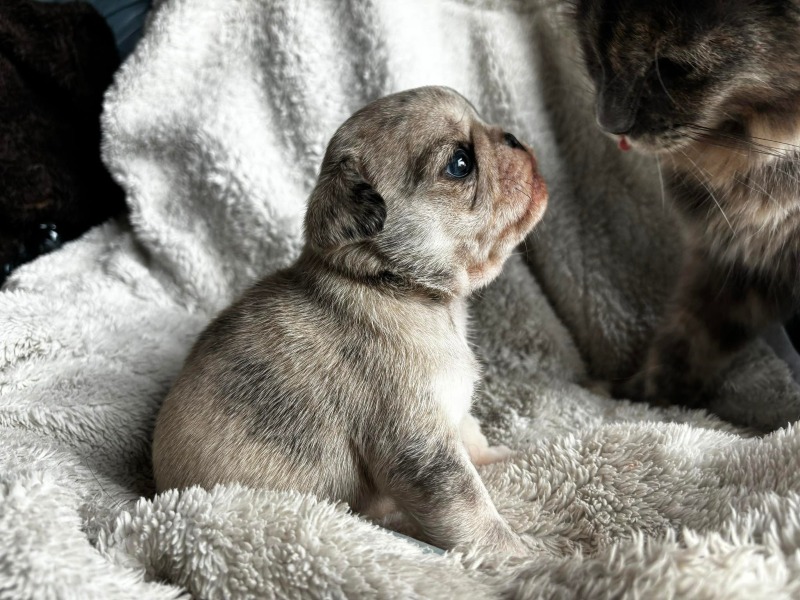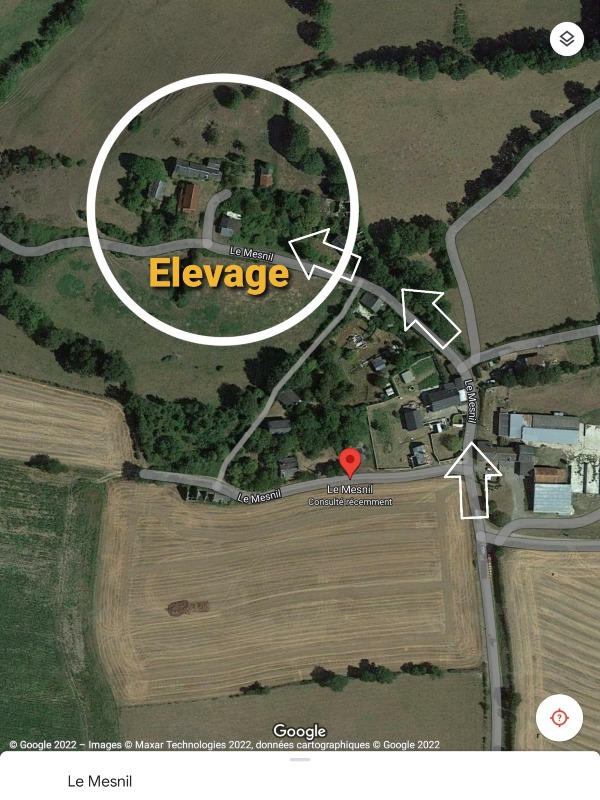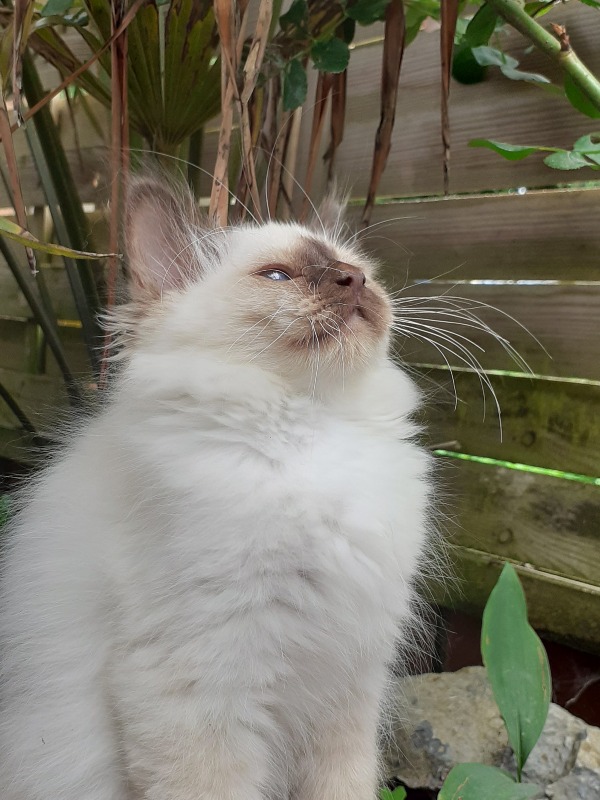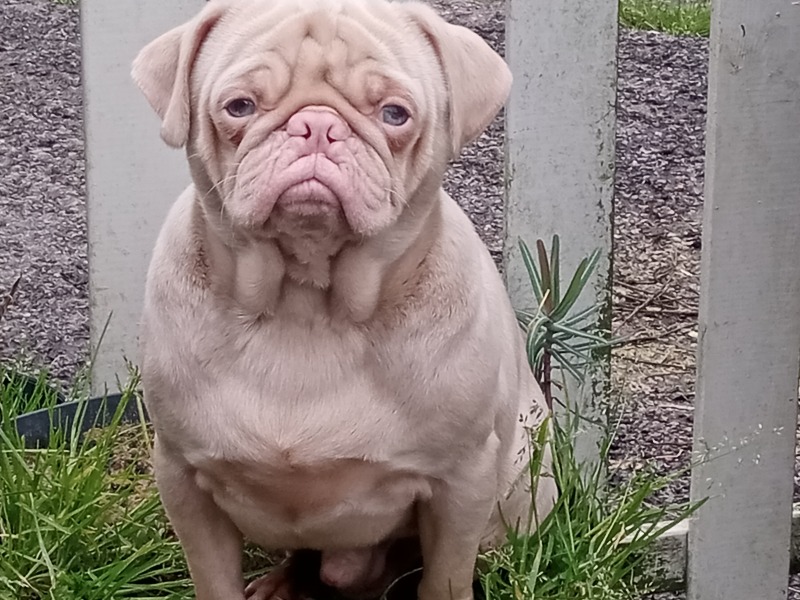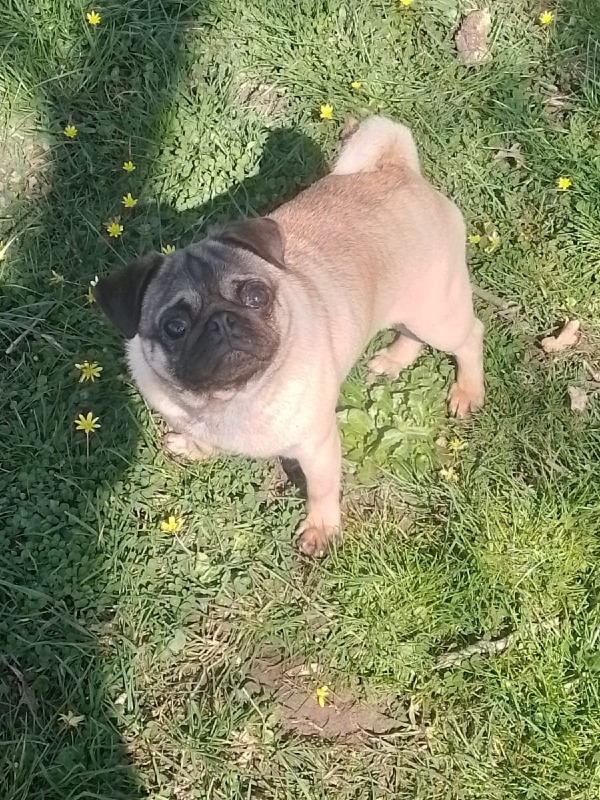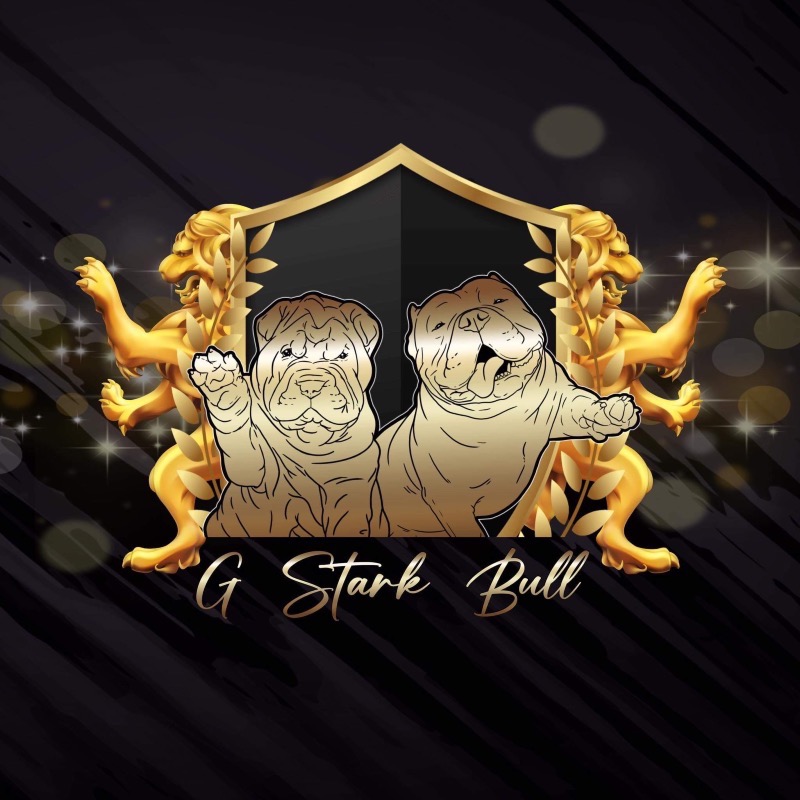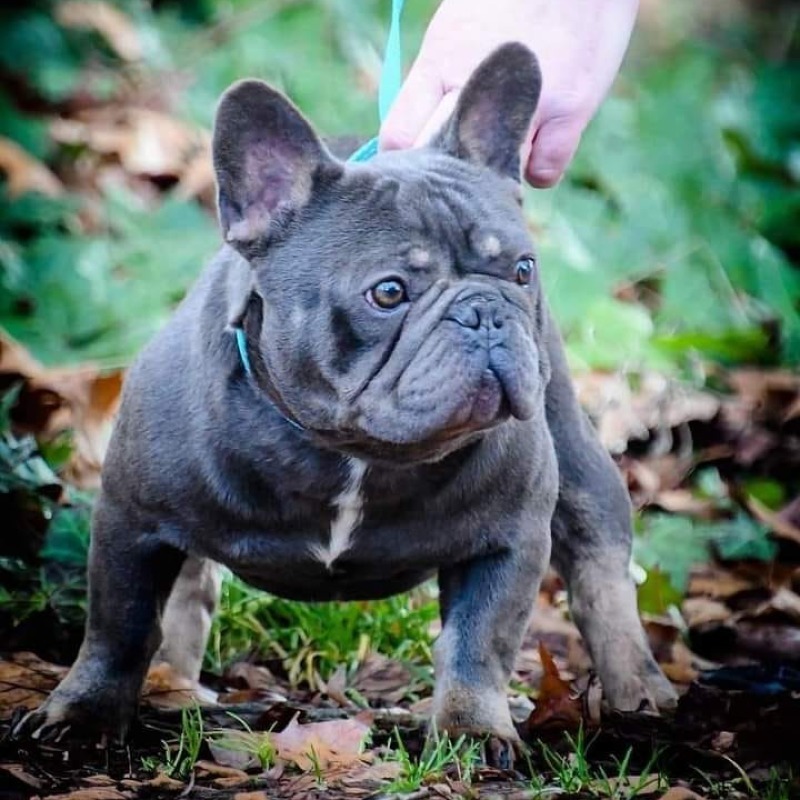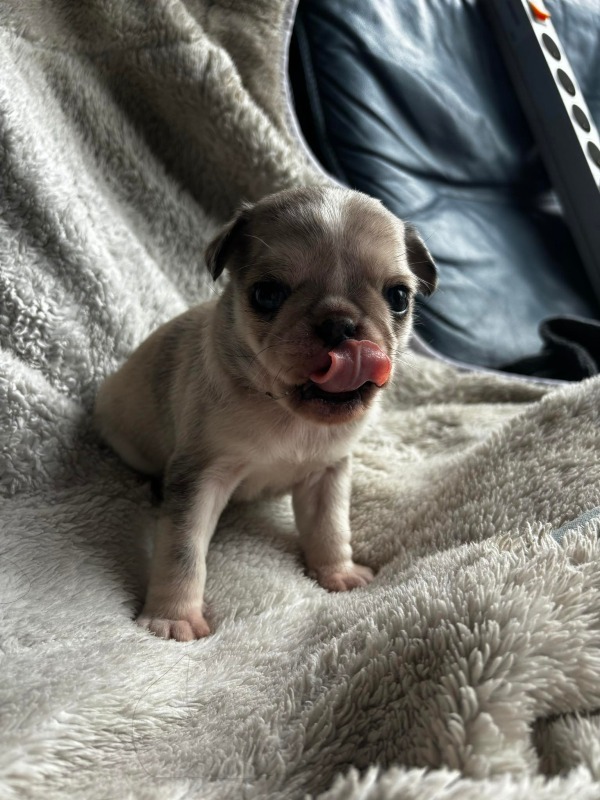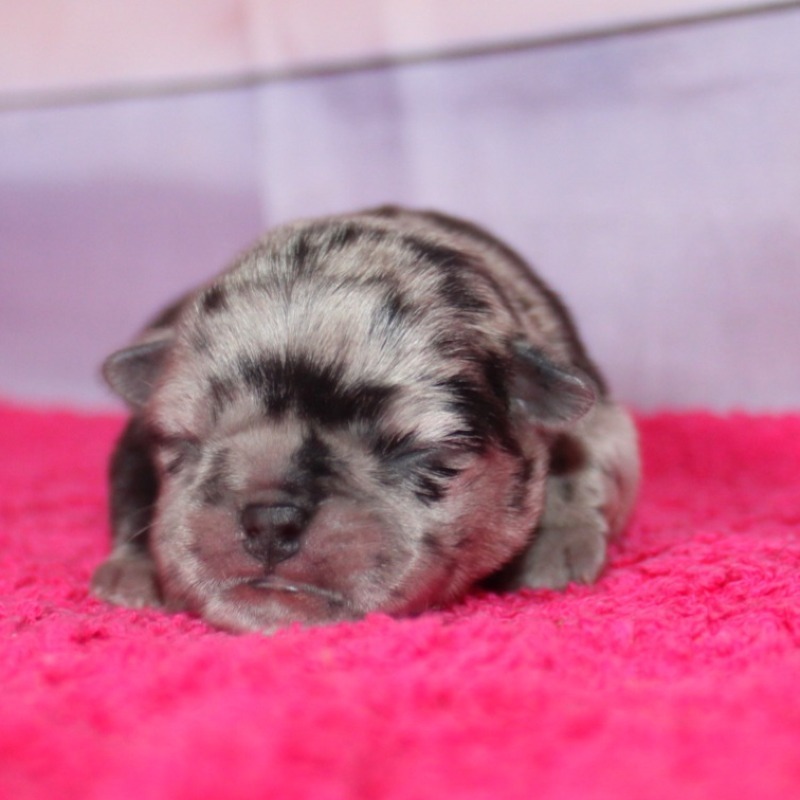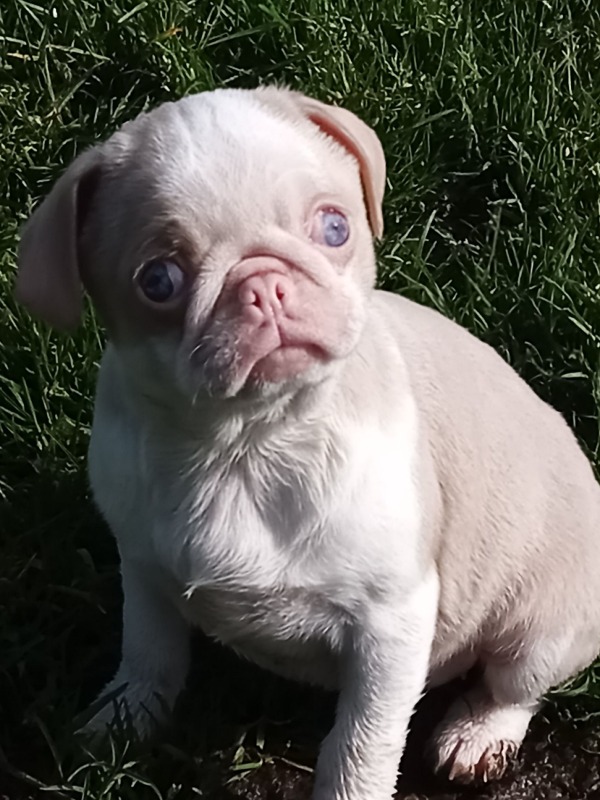Pug
Welcome to our page dedicated to the breed of dog pug!
Here, you will find all the useful information about pug. This descriptive profile will allow you to discover the aspects of this breed. You can notably consult information about the average price, monthly and annual upkeep expenses, their health, name ideas, as well as their official recognition by competent authorities.
Explore this page to discover everything you need to know.
Overall description of the breed
The ancestors of the Pug originated in China, a very ancient breed, it was imported into Europe by Dutch merchants in the 17th century, particularly popular in the 1500s, so much so that it became the symbol of the royal patriots. The Pug was developed and selected in the UK, where it quickly became popular with the general public as a companion dog.
The Pug was a huge popular success from the outset, thanks in particular to William III who encouraged its expansion in the country, and a long dispute arose between the Netherlands and England when it came to defining the breed's paternity, but it was finally attributed to Great Britain. The breed has been on the verge of extinction on several occasions, however, this jovial little dog has managed to be preserved despite everything, and nowadays the breed is present in most countries of the world and the number of births remains stable.
The breed was finally registered by the International Cynological Federation on 4 November 1966 and the latest update of the official standard was published on 13 October 2010.
He is a small dog, as long as he is tall, his body is square, short and compact, he is a robust dog despite his small size. His singular appearance makes him a unique companion. His legs are short and vigorous, his chest is broad and deep, his topline is clean and straight, with a high set tail, held aloft and forming a curl or even two curls on some dogs, which is much appreciated.
His head is rather massive, broad and rounded, his muzzle is crushed and his face is dotted with wrinkles, which makes all his charm, his bulging eyes are also part of his unique appearance. The coat is short, fine, silky and lies flat on the body. The colours allowed by the breed standard are apricot, silver, fawn or black, but other shades exist.
The character of the Pug is very gentle and endearing, and it is very difficult for it to blossom without regular contact with humans. Playful, but not very sporty, a small daily walk will suit him perfectly to meet his needs for energy expenditure. Calm and cheerful by nature, he is not the last to make mischief or to make his entourage laugh, he appreciates very much to be in the centre of the attentions. Easy to live with, the Pug will easily acclimatise to city life and will not need much space to feel happy.
The Pug loves children and will happily engage in play sessions with them, big or small, he is a caring companion who will be eager to please his loved ones. Excellent family dog, it is necessary to pay attention to its education, because it can sometimes be stubborn or not very docile.
He is a very intelligent little dog and his training must be applied firmly from the start, if he feels well looked after and understands his place in the home, he will prove remarkably affectionate and devoted. Social with other animals as well as fellow dogs, the Pug is a loyal companion with a strong character, patience will allow you to take advantage of all its qualities, thus, you will make of him the perfect small family dog.
Adult: The Pug will weigh approximately 6 to 8 kg (13.5 to 17.5 lbs), his withers height will be approximately 30 to 40 cm (12" to 16") for males and 29 to 36 cm (11.5" to 14") for females.
Awareness of acquiring an animal
Each animal is a sensitive being, deserving love, attention and care.
When you choose to adopt an animal, you take on the responsibility of ensuring its health and well-being throughout its life.
To learn more about animal welfare, we invite you to consult our FAQ by clicking the button below:
Origins
The Pug, also known as the Pug, finds its origins in China, where it was bred as a companion dog for imperial families over 2000 years ago. This breed was particularly prized by the Chinese nobility and often lived in the luxury of imperial palaces. Pugs were introduced to Europe by Dutch merchants in the 16th century, where they quickly gained popularity among royal families and aristocrats. In England, they became favorites of Queen Victoria. Their charm, small size, and affectionate nature have contributed to their global popularity. Today, the Pug is enjoyed worldwide for its endearing personality and distinctive appearance.
History
The history of the Pug dates back to ancient China, where this breed was cherished by imperial families and often protected by guards. Appreciated for their gentle temperament and compact size, Pugs were bred to be royal companions. In the 16th century, merchants from the Dutch East India Company introduced Pugs to Europe. The breed quickly gained in popularity, becoming a favorite of royal courts and nobles. In England, the breed experienced great popularity during the reign of Queen Victoria. Over the centuries, Pugs have retained their status as beloved companions, with their unique appearance and charming character making them irresistible to many dog lovers.
Standard
The standard of the Pug breed is defined by several international cynological organizations, including the Fédération Cynologique Internationale (FCI) and the American Kennel Club (AKC). The Pug is a small, compact, square, and well-proportioned dog. Its head is large and round, with deep wrinkles on the forehead. The eyes are large, round, bright, dark in color, and express a gentle solicitude. The muzzle is short and square, with wide and open nostrils. The ears are small, fine, and can be rose or button-shaped. The body is short and stocky, with a broad chest and well-arched ribs. The legs are straight and of medium length. The tail is curled over the back. The coat is short, smooth, and soft, with colors ranging from fawn, black, silver, or apricot.
Physical characteristics
The Pug is a small-sized dog, generally measuring between 25 and 30 cm at the withers and weighing between 6.5 and 8.5 kg. Its body is compact, muscular, and well-proportioned, with a square appearance. The head is wide and round, characterized by a short, square muzzle, often described as "flat", with deep and expressive wrinkles. The eyes are large, round, and dark, giving a soft and affectionate expression. The ears are small and can be rose-shaped or button-shaped. The coat is short, smooth, and shiny, requiring little maintenance. Common coat colors include fawn, black, silver, and apricot. The tail is curled and carried high on the back, often with a double loop.
Character
The Pug is known for its cheerful, affectionate, and sociable nature. It is a dog that loves human companionship and is extremely devoted to its family. Its playful and happy temperament makes it an excellent companion for children and adults. The Pug is also known for its intelligence and curiosity, although it can sometimes be a bit stubborn. It is generally friendly with strangers and other animals, making it a great choice for families or people living in urban areas. Despite its small size, the Pug has a big heart and is always ready to provide comfort and affection to its loved ones, making it a loyal and loving companion.
Life expectancy
The Pug has an average life expectancy of 12 to 15 years. This longevity depends on several factors, including a balanced diet, regular veterinary care, and an active lifestyle. Pugs are prone to certain health problems, including respiratory issues due to their short muzzle, as well as eye problems and skin allergies. It is important for owners to monitor their weight, as Pugs can easily become obese, which can exacerbate other health problems. With proper care and special attention to their well-being, these dogs can live a long and happy life, bringing joy to their families for many years.
Exercise and activity needs
The Pug, although small and often considered as an apartment dog, needs regular exercise to maintain its health and happiness. One to two daily walks of 20 to 30 minutes each are usually sufficient to meet its activity needs. In addition to walks, Pugs enjoy interactive play sessions and indoor games that stimulate their minds. It's important to note that Pugs are sensitive to extreme temperatures, especially heat, due to their short muzzle. Therefore, exercise should be moderate and adapted to the weather conditions to prevent respiratory problems. Regular exercise also helps prevent obesity, a common issue in this breed.
Recommended diet
The Pug's diet must be balanced and tailored to its specific needs. On average, an adult Pug consumes between 120 and 180 grams of dry food per day, split into two meals. It is crucial to choose a high-quality diet, rich in proteins and essential nutrients, to maintain its health. Dog food formulated especially for small breeds is often recommended. The monthly cost of food for a Pug typically ranges from 20 to 40 euros, depending on the quality of products chosen. It is important to monitor its weight and avoid overfeeding, as Pugs tend to obesity. Healthy treats can be used in moderation for training and as rewards.
Training and obedience
The Pug is an intelligent and receptive dog, which makes training and obedience easier. However, they can also be stubborn, requiring a patient and consistent approach. Positive reinforcement methods, such as treats and praise, are particularly effective with this breed. It is important to start training from a young age to establish good habits and proper socialization. Pugs respond well to basic commands such as "sit", "come", "heel", and "stay". Early socialization with other dogs and different environments helps prevent unwanted behaviors. Obedience classes can also be beneficial in strengthening the bond between the Pug and its owner while stimulating its keen mind.
Behavior with children
The Pug is often considered an excellent companion for children thanks to its affectionate, playful, and patient temperament. It loves to participate in children's games and is generally very tolerant of their sometimes clumsy behavior. Its small size and gentle nature make it an ideal choice for families. However, it is important to supervise interactions between the Pug and young children to avoid unintentional accidents and ensure that the dog is treated with respect. Teaching children to handle the dog gently and respect its needs is essential for harmonious cohabitation. With proper socialization, the Pug can become a loyal and loving companion for children of all ages.
Compatibility with Other Animals
The Pug is generally very sociable and gets along well with other pets, including dogs and cats. Its friendly nature and lack of hunting instinct make it an excellent companion for households with multiple animals. It is important to socialize the Pug from a young age to allow it to get used to the presence of other animals. Introductions should be gradual and supervised to ensure a harmonious cohabitation. Due to its small size and gentle temperament, the Pug is not aggressive and is often curious and playful with its four-legged companions. Positive socialization from the start helps strengthen the relationships between the Pug and the other animals in the household.
Grooming needs
The Pug has a short and smooth coat that requires relatively little grooming. A weekly brushing is sufficient to remove dead hair and maintain the shine of its coat. During shedding periods, in the spring and fall, brushing should be intensified to manage excess hair. Baths are only necessary occasionally, or when the dog is particularly dirty, using a gentle dog shampoo. Skin folds, especially on the face, should be cleaned regularly to prevent infections. Ears should be checked and cleaned regularly to prevent infections, and teeth should be brushed frequently to prevent dental problems. Nails should be trimmed regularly to prevent injuries.
Health
The Pug is generally a robust breed, but is prone to certain health problems, mainly due to its brachycephalic morphology. Respiratory issues are common, due to its short muzzle and narrow nostrils. Pugs may also suffer from eye problems, such as corneal ulcers and eye proptosis, because of their prominent eyes. Skin allergies and skin fold infections are also common. It is crucial to choose a reputable breeder who tests their dogs for these conditions to minimize risks. Balanced nutrition, regular exercise, and periodic veterinary visits are essential to maintain their health. With proper care, the Pug can live a long and healthy life, with an average life expectancy of 12 to 15 years.
Average price
The price of a Pug can vary considerably depending on several factors, such as lineage, pedigree, breeder reputation, and geographical location. In general, the average price for a Pug puppy is between 1,000 and 1,800 euros. Specimens from champion lines or with exceptional characteristics can cost much more, sometimes up to 2,500 euros or more. It is essential to choose a reputable breeder who adheres to health and animal welfare standards. Although this may mean paying a higher price, it often ensures a healthy and well-socialized puppy. Future owners should also budget for additional expenses for veterinary care, food, accessories, and training.
Expenses
Monthly expenses for a Pug can vary depending on several factors, including food, veterinary care, grooming, and accessories. On average, owners can expect to spend between 50 and 100 euros per month. Quality food, tailored to the specific needs of the breed, costs about 20 to 40 euros per month. Regular veterinary care, including vaccinations and parasite treatments, can add 10 to 20 euros per month. Grooming, although minimal, can cost 10 to 20 euros per month if done by a professional. Toys, treats, and other accessories can add an additional 10 to 20 euros. These costs may vary depending on the specific needs of each dog and the owner's choices.
Name ideas
Choosing a name for your Pug can be a fun and exciting task. Here are some name suggestions that may suit the personality and charming appearance of this breed: Max, Luna, Rocky, Bella, Zeus, Daisy, Charlie, Maya, Rex, Ruby, Thor, Nala, Bruno, Athena, Oscar, Zara, Milo, Sadie, Ginger, Toby. When choosing a name, it is important to consider its pronunciation and make sure it does not sound too much like basic commands to avoid confusion during training. Take the time to observe your dog and choose a name that reflects their unique personality and adorable appearance.
Legislation and regulation
In France, the Pug is not part of dog breeds categorized as dangerous and is therefore not subject to specific restrictions. However, owners must comply with general regulations regarding dog ownership, including identification by microchip or tattoo, and up-to-date vaccination. It is also recommended to take out civil liability insurance to cover any potential damage caused by their dog. When traveling abroad, it is crucial to check the specific requirements of the destination country regarding health certificates and vaccinations. Always inquire about local and national laws to avoid any legal issues and ensure a harmonious cohabitation with the Pug.
Official recognition
The Pug is recognized by several cynological organizations around the world. In France, it is recognized by the Société Centrale Canine (SCC). Internationally, it is recognized by the Fédération Cynologique Internationale (FCI), the American Kennel Club (AKC) in the United States, the Kennel Club (KC) in the United Kingdom, and the Canadian Kennel Club (CKC) in Canada. These organizations define the breed standards and organize dog shows where Pugs can be presented and evaluated. Recognition by these organizations also ensures that breeders adhere to health, temperament, and conformation standards, contributing to the preservation and improvement of the breed. Pedigrees issued by these organizations guarantee the purity and quality of the bloodlines.
Pedigrees
Pugs can obtain pedigrees recognized by various breed clubs around the world, ensuring their pure lineage and conformity to breed standards. In France, the Société Centrale Canine (SCC) issues pedigrees. In the United States, the American Kennel Club (AKC) offers pedigrees for Pugs. In the United Kingdom, the Kennel Club (KC) also issues pedigrees for this breed. Other organizations such as the Fédération Cynologique Internationale (FCI) and the Canadian Kennel Club (CKC) recognize and issue pedigrees for Pugs. These organizations verify the dogs' origins and certify that they meet breed criteria, thus guaranteeing the quality and purity of the lines.
Destination and usage
The Pug is mainly bred as a companion dog because of its gentle, affectionate, and playful temperament. Its small size and adaptable nature make it an ideal choice for families living in apartments or houses. In addition to being an excellent companion, the Pug often participates in dog shows, where it is appreciated for its beauty and adherence to breed standards. Some Pugs are also used as therapy dogs, bringing comfort and joy to people in hospitals, nursing homes, and schools. Thanks to its sociable and loving nature, the Pug excels in social interactions and can bring a lot of happiness to those around it.
Prohibitions
In France, the Pug is not part of dog breeds subject to specific prohibitions or classified as dangerous. However, it is essential to respect general regulations regarding dog ownership, especially in terms of identification, vaccination, and compliance with local laws concerning pets. In some countries, regulations may vary, and it is crucial to inquire about local and national laws, especially when traveling or moving, to avoid any violation. For example, some countries may have specific requirements for the importation of dogs, including health certificates and quarantines. Always check current regulations to ensure a harmonious and legal coexistence with your Pug.
Breeders of Pug
Classified Ads of Pug
Breed clubs of pug
No of pug breed clubs are currently registered on Preeders.
If you would like to highlight your breed club, sign up for free now and be the first to appear on this page.

